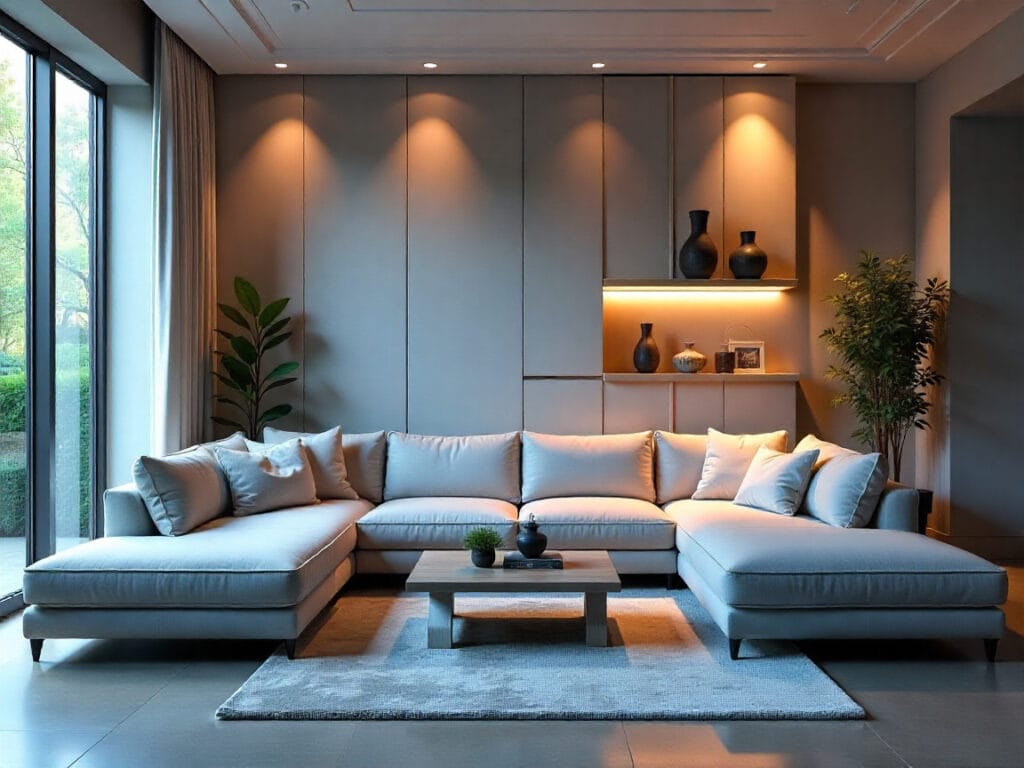Table of Contents
Introduction
Modular furniture has taken the world of interior design by storm, offering a perfect blend of flexibility, style, and functionality. With modern homes, particularly in urban areas, demanding space-saving solutions, modular furniture has become an essential part of efficient home interiors. Whether you’re furnishing a new apartment, renovating a room, or adding extra functionality to your space, selecting the right modular furniture is key. This guide will walk you through everything you need to know to make the best choice for your home.
Understanding Modular Furniture
Modular furniture consists of individual units or modules that can be arranged and rearranged to fit different spaces and needs. What sets it apart is its ability to adapt over time, offering endless configuration possibilities. Perfect for evolving lifestyles, modular furniture works in harmony with your home and its layout.
Benefits of Modular Furniture
Before we dive into the details of choosing modular furniture, let’s review its benefits:
- Flexibility: You can customize modular furniture to fit any space. It can be easily reconfigured as your needs evolve.
- Functionality: Many modular pieces are multifunctional, like a sofa that converts to a bed or storage units that double as seating.
- Space-Saving: Ideal for small spaces, modular furniture helps you maximize every square inch.
- Modern Design: Modular furniture often features sleek, contemporary designs that elevate the overall aesthetics of your home.
- Easy to Move: Smaller, lighter units make moving and reconfiguring modular furniture more convenient than traditional furniture.
Assess Your Space and Needs
Measuring Your Space
The first step in choosing the right modular furniture is measuring your space. Proper measurements ensure that the furniture fits the room and leaves adequate space for movement. Take note of ceiling heights, door frames, windows, and any built-in features. This will help you avoid purchasing furniture that crowds or underutilizes the space.
Understanding Functional Needs
Think about the role each room plays in your daily life. Are you furnishing a living room that will host guests often, or a cozy bedroom that needs extra storage? Identifying these functions will help you select modular pieces that optimize each space. Modular storage units, for instance, work well in bedrooms or home offices, while modular sofas are perfect for living rooms that need versatile seating arrangements.
Future Expansion
Modular furniture is designed for flexibility and growth. As your family expands or your needs change (e.g., converting a bedroom into a home office), modular pieces can evolve along with you. For example, you can add more seating to a sectional sofa, extend a modular desk setup, or include additional storage units as required.
Material Matters
Durability
Modular furniture is available in a variety of materials, such as engineered wood, metal, and glass. Engineered wood, like MDF and plywood, is popular for its affordability and durability, while metal frames offer strength and are great for industrial-style designs. Glass accents add a modern touch to shelving or coffee tables.
Aesthetics
The materials and finishes of your modular furniture can greatly influence the overall look and feel of your space. For a warm and natural look, opt for wood veneers or solid wood finishes. If your home leans towards a more minimalist or modern aesthetic, metal or glass pieces may suit the space better.
Maintenance
Different materials require different levels of care. Engineered wood is often low-maintenance, but may be prone to scratches, while metal and glass can be easier to clean but may show smudges or fingerprints. Consider how much maintenance you’re willing to perform on your furniture and choose materials accordingly.
Customizability and Flexibility
Tailoring to Personal Style
One of the best aspects of modular furniture is its ability to reflect your personal style. From customizable colors to different layout options, modular furniture can be designed to match your taste. Choose pieces that not only fit your space but also align with your home’s overall aesthetic.
Reconfigurable Layouts
The key advantage of modular furniture is its ability to change as your needs do. Modular sofas, for instance, can be reconfigured into an L-shape, U-shape, or separate individual pieces, depending on the occasion. This adaptability makes modular furniture a long-lasting investment.
Budget Considerations
Balancing Cost and Quality
While modular furniture tends to be more affordable than custom-built options, it’s still important to find a balance between cost and quality. Look for pieces that are durable and well-made. Budget-friendly materials like engineered wood and high-quality laminates can provide a good balance between affordability and durability.
Cost-Effective Solutions for Different Rooms
In spaces like the kitchen or bedroom, invest in modular cabinets or wardrobes that offer storage solutions. Modular kitchen systems, for instance, can be more budget-friendly compared to fully custom-built kitchens, while still providing great functionality. In living rooms, modular sofas or storage units offer flexibility without breaking the bank.
Popular Types of Modular Furniture
Modular Sofas
A modular sofa is one of the most versatile pieces you can invest in. Configure it to fit your room in an L-shape, U-shape, or even separate seating units. For added convenience, choose one with removable covers for easy cleaning.
Modular Storage Units
These units can be stacked, rearranged, or connected to create a system that works for your space. Modular storage works perfectly in bedrooms, living rooms, and even home offices.
Modular Beds
Perfect for small spaces or guest rooms, modular beds can include built-in storage or even convert into sofas during the day. This versatility makes them ideal for multifunctional rooms.
Tips for Maintaining Modular Furniture
- Regular Cleaning: Keep your furniture looking new by cleaning it according to the manufacturer’s instructions.
- Reconfiguration: Periodically reconfigure your modular furniture to adapt to your changing needs.
- Protect from Damage: Use protective pads under the legs of your furniture to avoid scratches, and avoid placing heavy objects on delicate surfaces.
Conclusion
Choosing the right modular furniture is about finding pieces that fit your space, meet your functional needs, and reflect your personal style—all while staying within budget. Modular furniture offers a flexible, stylish solution that can grow and evolve with your home. By considering the factors outlined in this guide, you’ll be well on your way to creating a functional and beautiful living space.

